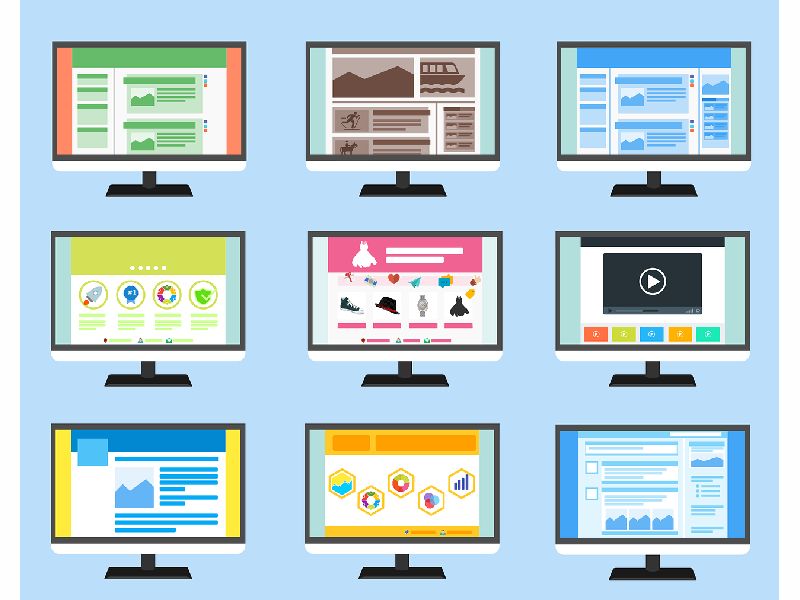In an age where digital data is akin to currency, leveraging data analytics has become a cornerstone for smart app monetization strategies. This evolving landscape, where every user interaction can be tracked, analyzed, and translated into actionable insights, presents a wealth of opportunities for app developers and marketers. In this article, we embark on an exploratory journey into how data analytics is revolutionizing app monetization, offering a deeper understanding of user behavior, personalizing experiences, and ultimately driving revenue growth.
The Basics of Data Analytics in App Monetization
At its core, data analytics in app monetization involves the collection, processing, and interpretation of user data to make informed decisions about marketing and revenue strategies. This process begins with the identification of key metrics – from user engagement patterns and purchase histories to app usage frequency and preferences. By harnessing this information, developers can tailor their monetization strategies to align with user behaviors and preferences, thereby enhancing the overall user experience while boosting revenue.
In this context, three compelling case studies will be analyzed for their exemplary use of data analytics in monetization strategies:
Personalized Advertising: We’ll explore how a social media app uses user data to create highly targeted advertising, leading to increased engagement and revenue. This case was chosen to highlight the effectiveness of personalized advertising in apps where user data is abundant.
User Behavior and In-App Purchases: Our focus will then shift to a mobile game that leveraged user behavior analytics to optimize its in-app purchase strategy. This example demonstrates the importance of understanding user spending habits to enhance monetization opportunities.
Subscription Models and User Retention: Lastly, we’ll delve into how a streaming service employed data analytics to refine its subscription model and improve user retention rates. This case study is crucial for illustrating how analytics can be used to maintain a steady and growing subscriber base.
Through these cases, we aim to showcase the diverse applications of data analytics in app monetization, illustrating why a data-driven approach is indispensable in today’s competitive app market. Each case study was selected for its unique contribution to our understanding of how data can be effectively used to not just monetize an app, but also to enrich the user experience and foster long-term user loyalty.
Case Study 1: Personalized Advertising with Facebook’s Platform
Transforming Advertising through Data Analytics
Facebook’s advertising platform is a prime example of how data analytics can transform advertising into a more personalized and effective experience. By leveraging the vast amount of user data collected, Facebook offers advertisers the ability to target their ads with incredible precision.
Example: Targeted Advertising on Facebook
Facebook, launched in 2004, has evolved into one of the most powerful platforms for digital advertising. By 2012, Facebook had already started refining its advertising model, allowing businesses to target users based on interests, behaviors, demographics, and more. This granularity in targeting options meant that advertisers could reach their ideal audience with much higher precision than traditional advertising methods.
For instance, a 2015 report highlighted how a fashion retailer used Facebook’s targeted advertising to reach young adults interested in fashion, resulting in a significant increase in online sales. By tailoring their ads to user preferences and online behavior, the retailer not only maximized its advertising ROI but also ensured that the ads were relevant and engaging to the audience.
The Success of Video Ads
An interesting development in Facebook’s advertising strategy was the introduction and subsequent success of video ads. In the early 2010s, Facebook began emphasizing video content, and by 2016, they reported that users were watching 100 million hours of video per day on the platform. Advertisers quickly capitalized on this trend, creating engaging video ads that resulted in higher engagement rates compared to traditional image-based ads. One notable case was a technology company that saw a 30% increase in website visits after shifting to video ads on Facebook, demonstrating the effectiveness of aligning ad formats with user content preferences.
Case Study 2: Optimizing In-App Purchases in “Clash of Clans”
Understanding User Spending Habits through Data Analytics
“Clash of Clans,” a mobile strategy game developed by Supercell, serves as an excellent case study for understanding and optimizing in-app purchases (IAPs) using data analytics. The game, released in 2012, quickly rose to popularity and became one of the highest-earning mobile games due to its effective use of IAPs.
Example: Strategic Placement of In-App Purchases
Supercell’s strategy involved closely analyzing user behavior within “Clash of Clans” to determine the most opportune moments for offering in-app purchases. They discovered that players were more likely to make purchases when facing particular challenges or when specific resources were scarce. By strategically placing enticing IAP offers at these critical gameplay moments, such as offering resource packs or unique items, Supercell significantly increased its revenue from in-app purchases.
The Introduction of the Builder Base
A notable development in “Clash of Clans” was the introduction of the Builder Base in 2017, a new section of the game with different mechanics and additional opportunities for monetization. This update was a direct response to player behavior and feedback. The Builder Base offered new items and faster progression for players willing to make purchases, and it was an instant hit. This update reportedly led to a substantial increase in daily revenue for “Clash of Clans,” demonstrating the effectiveness of introducing new content tailored to user preferences and spending habits.
Case Study 3: Adapting Monetization in Response to Market Dynamics in “Bumble”
Navigating Market Evolution
“Bumble,” a popular online dating app launched in 2014, is a pertinent example of an app adapting its monetization strategy to market changes. Initially, Bumble differentiated itself in the dating app market with unique features like allowing only female users to make the first contact in heterosexual matches. However, as the market evolved and competition intensified, Bumble realized the need to innovate its monetization approach.
Strategic Monetization Adaptations
Bumble introduced Bumble Boost, a subscription service, in 2016. This service offered users additional features like seeing who has swiped right on them, extending matches, and re-connecting with expired matches. These features were carefully chosen based on user behavior analytics, which indicated that users were interested in more control and insight into their dating experience. The introduction of Bumble Boost was a strategic move to enhance user experience while creating a steady revenue stream beyond the standard freemium model.
Response to Market Evolution and Diversification
As the online dating scene continued to evolve, Bumble further diversified its features and revenue streams. The app expanded into new areas like Bumble Bizz for professional networking and Bumble BFF for finding friends, each offering unique features and monetization opportunities. This expansion was not only a response to changing market dynamics but also a strategic decision to cater to a broader user base with varying interests beyond dating.
Empowering User Choices and Ethical Monetization
An interesting aspect of Bumble’s monetization strategy is its emphasis on ethical practices and empowering user choices, which has been a core part of its brand identity. For instance, in response to user feedback, Bumble made a significant decision to ban body shaming on its platform in 2021. This move, while primarily aimed at improving user experience and safety, also positively impacted user engagement and loyalty, indirectly contributing to its monetization success.
Conclusion
The exploration of the monetization strategies of Spotify, “Clash of Clans,” and Bumble reveals crucial insights into the ever-evolving landscape of app development and the importance of adaptive revenue models. Each case study offers unique lessons in leveraging specific monetization tactics while responding to market changes and user preferences.
From Spotify, we learn the power of the freemium model and how offering varied levels of access and content can appeal to a broader user base. Their approach demonstrates the effectiveness of balancing free features with premium offerings, creating a sustainable revenue stream without alienating users who prefer free access.
The success of “Clash of Clans” in optimizing in-app purchases through data analytics highlights the importance of understanding and responding to user behavior. By analyzing player interactions and preferences, the game was able to introduce targeted in-app purchases that enhanced the gaming experience while significantly boosting revenue.
Bumble’s journey showcases the necessity of evolving monetization strategies in response to changing market dynamics. Their expansion beyond the standard dating app model into areas like networking and friendships, along with their commitment to user-centric and ethical practices, underscores the value of diversifying revenue streams while staying true to brand values.
What these cases collectively teach us is that in the world of app development, there is no one-size-fits-all solution for monetization. Success in this arena requires a deep understanding of your users, flexibility in your business model, and a willingness to innovate and adapt as market conditions and user needs evolve.
Looking ahead, the future of app monetization will likely continue to be shaped by new technologies, shifting user expectations, and evolving market trends. As we move forward, the lessons from Spotify, “Clash of Clans,” and Bumble will be invaluable for app developers and businesses seeking to navigate this complex and dynamic landscape. The key will be in finding creative and user-focused approaches to generating revenue while providing value and maintaining trust with the user base.











